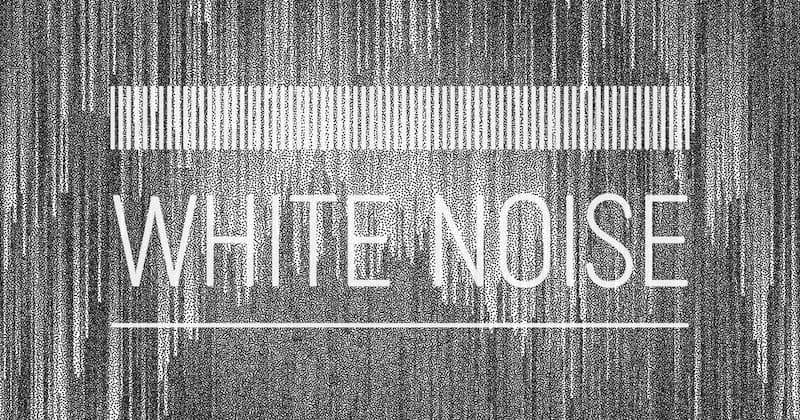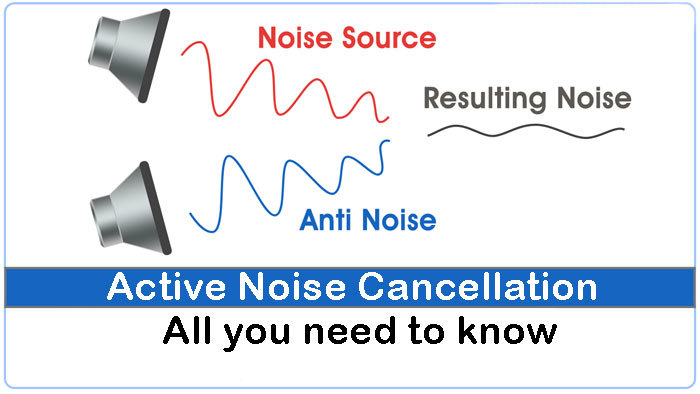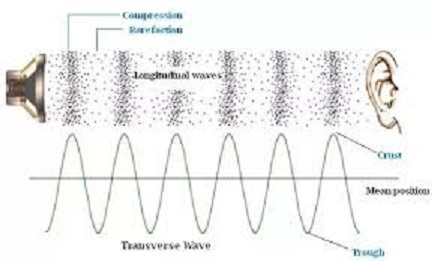A crying
baby, a
TV in the living room, a
washing machine, or noisy music from your brother’s room: a busy household can be a persistent source of the noise. There’s still more noise pollution as you go outside. On a typical day, noise pollution in your neighborhood may include a neighbor’s lawnmower, honking vehicles, barking
dogs, and sirens. Welcome to the new day, which is accompanied by a lot of noise (more info about
noisy neighbors on
silencewiki.com). Unless you live in a remote rural location, environmental noise, also known as noise pollution, is a normal occurrence.
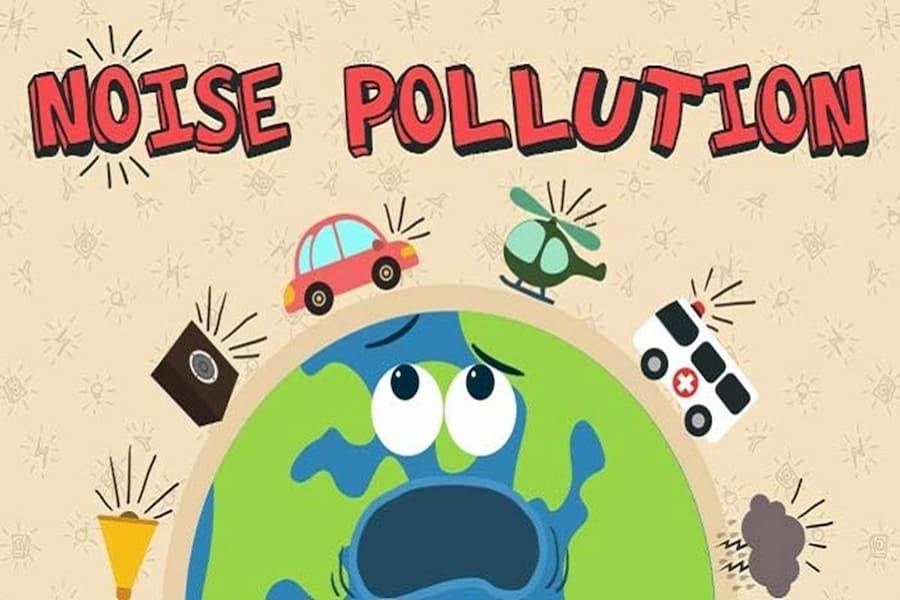
Noise Pollution Definition
People are almost all surrounded by noise, whether it is normal, such as birds chirping, or human-made, such as motor
traffic. Noise pollution, on the other hand, may have a major effect on human and environmental life. Let us first define what noise pollution is (more about noise pollution on
nationalgeographic.org).
According to the World Health Organization, noise pollution is a state of excessive noise that can severely affect human health and disrupts people’s everyday lives at school, work, home, and leisure time.
However, not all noises are considered noise pollution. Noise pollution is classified by the World Health Organization (WHO) (
official website) as noise that exceeds 65
decibels (dB). Noise becomes disruptive when it reaches 75 decibels (dB) and unpleasant when it reaches 120 dB. As a result, it is advised that noise levels be maintained below 65 dB throughout the day and that nighttime background noise levels of more than 30 dB make it difficult to get a good night’s
sleep.
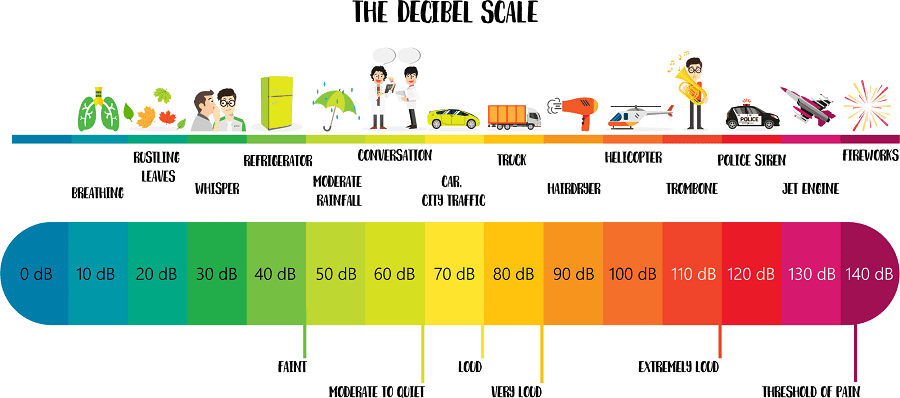
Let us first define the two primary types of noise before delving further into the significant implications of noise pollution.
| Man-Made Noise |
Environmental Noise |
| Noise generated by man-made activities is referred to as this. Construction activity, aircraft noise, vehicular traffic, domestic noise, and noise from pubs and bars are only a few examples. This kind of noise, which can range from 30 to 140 decibels, is particularly dangerous to humans. |
The term “environmental noise” relates to the noise generated by a variety of environmental activities. This will include everything from animal mating calls to thunderstorms that can reach 140 decibels (more about environmental noise on eea.europa.eu). |
How Common Is Noise Pollution?
How serious is it? According to the American Speech-Language-Hearing Association (ASHA) (
official website), around 30 million Americans are regularly exposed to harmful noise levels, up from 10 million just a few years before. And, of course, noise pollution affects even more people around the world, so it’s fair to say that noise pollution is becoming a global issue.
To give you a global perspective, here’s an infographic from IBERDROLA (
official website) showing the world’s noisiest cities.

Effects of Noise Pollution
Constant loud noise can harm human health in a variety of ways, especially in the very young and the elderly. It can even cause tinnitus or deafness. Moreover, on land and at sea, noise pollution can cause health issues for people and animals. Here are some of the major effects of noise pollution.
1. Health Effects And Diseases
Noise pollution can be harmful to our wellbeing in a variety of ways, whether we are aware of it or not.
Hypertension
In this situation, hypertension is a direct consequence of noise pollution, which induced elevated blood pressures for an extended period of time.
Hearing Loss
Noise pollution, whether by listening to excessive music in
headphones or being exposed to excessive construction sounds at work, heavy air or land traffic, or isolated occurrences in which noise levels exceed unsafe thresholds, such as about 140 dB for adults and 120 dB for children, may cause hearing damage.
Video: Noise health effects. Beyond annoyance
2. Psychological Effects
Sleep Loss
Constant air or ground traffic during the night causes sleep disruptions, which are dangerous illnesses that can impair daily productivity and lead to serious diseases.
Cognitive Issues
Noise has an effect on people’s brain responses and capacity to concentrate, which can contribute to poor results over time. When so much noise reaches the brain, it causes slower reaction times and dulls the consciousness, just as it does for most sound waves.
It also affects memory, making learning difficult. According to research, school children who live near railway stations or airports have difficulty listening.
Child Growth And Development
Children tend to be particularly vulnerable to noise exposure, and a variety of noise-pollution-related diseases and dysfunctions, ranging from hearing loss to neurological and physical symptoms, are believed to affect children. Children who listen to music at high volumes on a daily basis are often at risk of having hearing problems.
Video: 5 Tips for Better Sleep in a Noisy Environment by Audimute
3. Effects On Wildlife And Marine Life
Wildlife Effects
Wildlife is more reliant on sound than humans, so they face far more challenges as a result of noise pollution. Since their life depends on it, animals develop a stronger sense of hearing than humans.
Human-made noise has an effect on a wide variety of species, according to a new report published in Biology Letters. Excessive noise has negative consequences that start at home. For example, in homes where there is excessive noise,
pets respond more aggressively.
They are more frequently disoriented and have a variety of behavioral problems. Hearing loss is common in
nature, making species easy prey and resulting in declining populations. Others become ineffective hunters, disrupting the balance of our
ecosystem.
Marine Life Effects
Our oceans have lost their serenity. Thousands of oil drilling rigs, sonars, seismic exploration equipment, coastal recreational watercraft, and cargo vessels have polluted the oceans, posing a significant threat to marine life.
According to National Geographic, naval sonar devices produce some of the noisiest underwater sounds. Sonar, like echolocation, operates by transmitting sound waves out into the water, which bounce off an object and return an echo to the ship, indicating the object’s location. Sonar sounds can reach 235 decibels and reach hundreds of miles under the surface, conflicting with whales’ ability to use echolocation.
Furthermore, sonar has been shown to induce mass strandings of whales on beaches and to change the feeding habits of endangered blue whales, according to research (Balaenoptera musculus).
Video: How noise pollution threatens ocean life | The Economist
4. Social And Economic Effects
Noise pollution has an important social and economic influence in addition to its medical and environmental consequences on people and animals.
The reality is that one of the most common side effects of noise exposure is sleep disruption. When you don’t get enough sleep, your memory and creativity suffer, as well as your judgment and psychomotor abilities. People who live near airports or busy roads get more headaches, take more sleeping pills and sedatives, and are more vulnerable to minor injuries due to their disoriented and tired condition, according to research.
As a result, noise pollution reduces efficiency by a combination of distraction, exhaustion, and contact disruption. The annual loss of production is estimated to be about $2 billion.
There is also a significant negative effect of noise pollution on the economy.
Heart damage caused by proximity to daytime road-noise, for example, costs $1,183 million per year. Meanwhile, tinnitus from traffic/leisure noise costs $52 million a year, and hearing damage from heavy music costs $38 million per year, respectively.
Simultaneously, daytime and nighttime noise will cause children to develop more slowly, costing $252 million a year.
There are also additional charges related to the lack of amenities. This is the deliberate dissatisfaction of those who are subjected to the noise. The cost of lost amenity due to noise pollution is estimated to be between $2 and $3 billion each year.
Video: Why Noise Pollution Is More Dangerous Than We Think | The Backstory | The New Yorker
Noise Control
These are commendable steps and more
concrete interventions that are needed in all noisy urban areas. Meanwhile, you should take the following precautions to protect your hearing and overall well-being from unhealthy noise pollution.
| 1. Be aware of your noise |
You should be able to tell when something is too loud. Jet motors, lawnmowers, trucks, chainsaws, powerboats, and personal stereos are only a few of the sounds that can inflict harm (those over 80 decibels). The noise is probably in this category if you have to raise your voice to yell over it to be heard by someone within an arm’s reach. |
| 2. Control your own noise |
Consider how your own actions could be adding to the issue and how you can minimize noise emissions by making minor adjustments: Idle your engine, use rugs and carpeting in your flat, and look for power tools and appliances that produce less noise. Other suggestions from the National Library of Medicine include shutting off the music or the television while not in use and planting trees to create noise barriers. |
| 3. Wear hearing protective devices (HPDs) |
Wear hearing protective devices (HPDs) such as earplugs or earmuffs while doing loud work or outdoor sports. Bear in mind that by statute, HPDs must be labeled with a Noise Reduction Rating (NRR) based on performance achieved under optimal laboratory conditions, so take that into consideration when shopping. Firearms produce one of the loudest and most dangerous sounds on the planet. |
| 4. Improve noise insulation |
Insulation is one of the most popular and practical ways to minimize noise pollution in the household. It is a soundproofing technique that aids in the reduction of sound waves and noise. Installing soundproofing materials on the walls, ceiling, and even the floor improves insulation. |
| 5. Have a dedicated quiet place |
Having a designated quiet room can be beneficial if you choose to get away from distractions that make you feel uneasy and degrade your quality of life. Soundproofing can be as high as 100 percent in quiet rooms. |
| 6. Plant trees |
Trees have been seen to be beneficial in lowering noise levels in urban areas, along major highways, and in households. As a result, having a large number of plants and trees in a given area means fewer noise emissions. Furthermore, trees have a variety of aesthetic benefits as well as improved air quality. |
| 7. Create awareness and advocacy against noise pollution |
Growing public understanding of noise pollution and its impacts on humans and wildlife will help minimize noise pollution. If the majority of people are conscious that noise emissions can cause hearing loss and mental stress, they are more likely to engage in noise pollution reduction measures. |
Video: Noise Pollution and its Control
Is Coronavirus Reducing Noise Pollution?
One silver lining of urban social distancing is the newfound silence, which has residents claiming that birdsong, for example, is louder than it has ever been. Since there are fewer vehicles, aircraft,
jackhammers, and leaf-blowers to deal with, certain birds’ pitches are likely to be lower than before. The advantages for biodiversity go beyond improved connectivity. Reduced noise levels are linked to better reproductive success, fewer migrations, and lower mortality rates.
Transportation is crucial to reducing urban pollution, and it is expected to be quieter during the pandemic. Moreover, noise pollution from transportation sources like roads, trains, and planes is related to economic development. As a result, we expect to see a substantial decline in transportation noise levels in the near term due to lower mobility demand in the current scenario.
Legal Status And Regulation
Individuals should protect themselves from the adverse effects of noise emissions in a variety of ways. Noise can be dealt with in a variety of ways in your home, classroom,
office, and neighborhood. But, you can also protect yourself because there are laws and regulations that have you covered.
| Clean Air Act Title IV – Noise Pollution |
The 1990 Clean Air Act Amendments (official website) introduced a new title IV, Acid Deposition Control, without replacing the previous title IV, Noise Emission Control. The original title IV (noise pollution) is designated as subchapter IV, while the current title IV (acid deposition control) is designated as subchapter IV-A in the United States Code. |
| Noise Control Act of 1972 |
The Noise Control Act of 1972 (official website) creates a federal policy to ensure that all Americans live in an atmosphere free of noise that is harmful to their health and safety. The Act, therefore, accomplishes the following goals:
1. establish a means for effective coordination of Federal research and activities in noise control
2. authorize the establishment of Federal noise emission standards for products distributed in commerce
3. provide information to the public respecting the noise emission and noise reduction characteristics of such products.
Although state and local municipalities bear primary responsibility for noise reduction, federal legislation is required to address large noise sources in commerce, which require nationwide uniformity of treatment. Congress also mandated that the Environmental Protection Agency (EPA) (official website) oversee the noise research and management activities of all federal agencies. |
| The Role EPA |
The EPA administrator created the Office of Noise Abatement and Control (ONAC) (official website) under the Clean Air Act to conduct noise investigations and analyses and their effect on public health and welfare. The EPA coordinated all Federal noise reduction efforts through ONAC, but the Administration decided in 1981 that noise matters could be addressed at the state and local level.
As a result, ONAC was closed down, and state and municipal municipalities were given primary responsibility for dealing with noise problems. However, the Environmental Protection Agency (EPA) holds the power to investigate and research noise and its effects, as well as to disseminate information to the public on noise emissions and their negative health effects, In accordance with the Noise Control Act of 1972 and the Quiet Communities Act of 1978. |
FAQ
What are the 3 main causes of noise pollution?
There are many sources of noise pollution, but these are three of the most common. The first is road-noise, which accounts for the majority of polluting noise in cities. A car horn, for example, emits 90 decibels, while a bus emits 100 decibels. The next source of noise is air traffic. While there are fewer planes flying over towns than there are vehicles on the street, the effect is greater: a single plane emits 130 decibels.
The last is construction noise, construction of buildings and parking lots, as well as surface and pavement resurfacing, is extremely disruptive. A pneumatic drill, for example, emits 110 decibels.
How can we avoid noise pollution?
You can minimize noise pollution by shutting off devices while not in use, using earplugs, turning down the sound, planting more trees, and maintaining cars and machinery on a regular basis, among other things. You can reduce the detrimental health impacts that noise pollution has on all by controlling noise, which we mentioned earlier.
What are the 5 types of pollution?
Any matter that has a negative effect on the atmosphere or the animals that exist in it is referred to as “pollution.” Air pollution, water pollution, soil pollution, light pollution, and noise pollution are the five main types of pollution.
How do trees reduce noise pollution?
Sound attenuation, or the damping of sound, is a phenomenon that trees use to act as noise buffers and mitigate the pollution. Noise is reduced by absorption, deflection, refraction, and masking in trees. Noise absorption by plants, sound waves are absorbed by tree sections such as roots, leaves, branches, and timber.
Video: Noise Pollution | Prevention & Causes of Noise Pollution | Letstute




